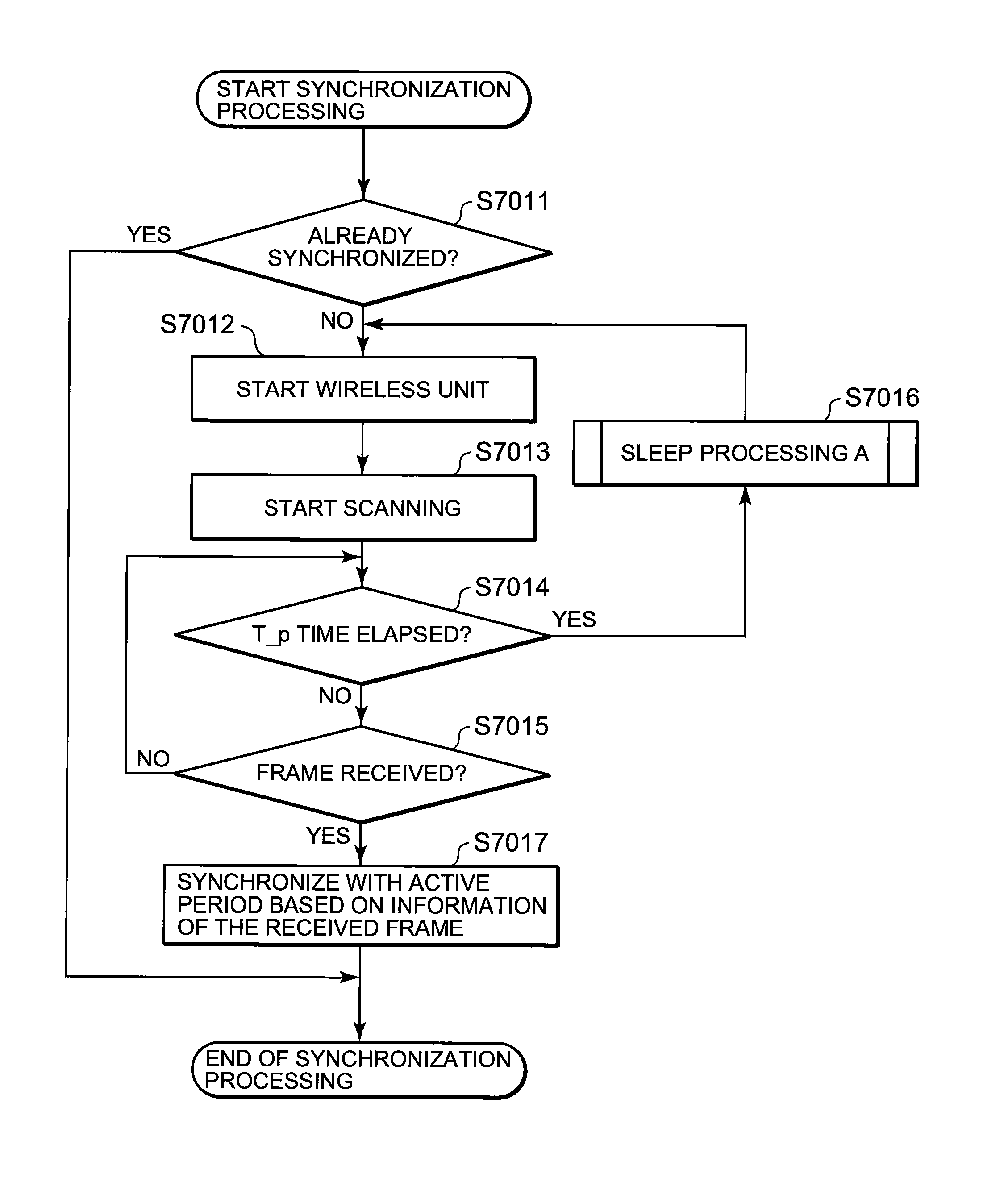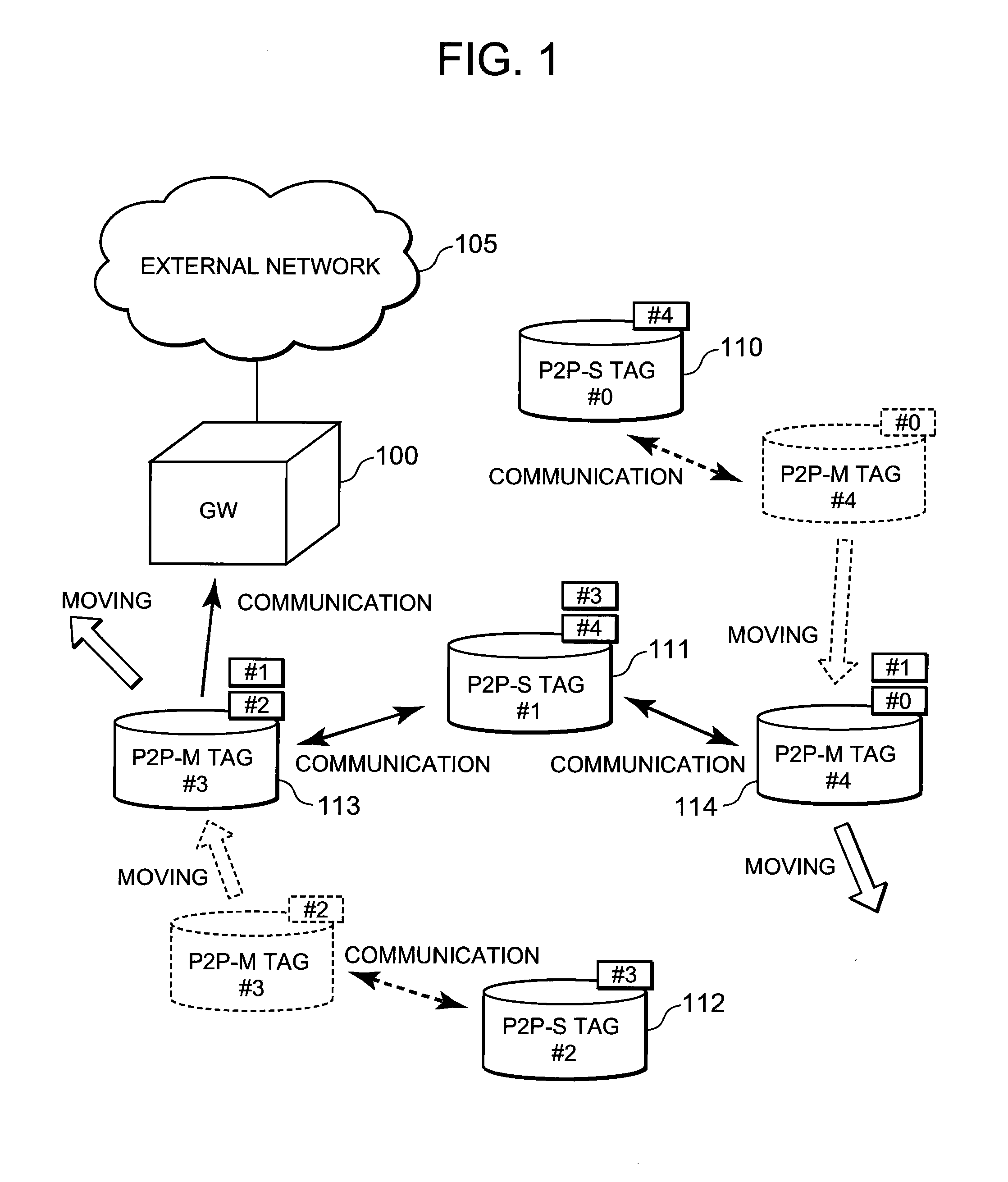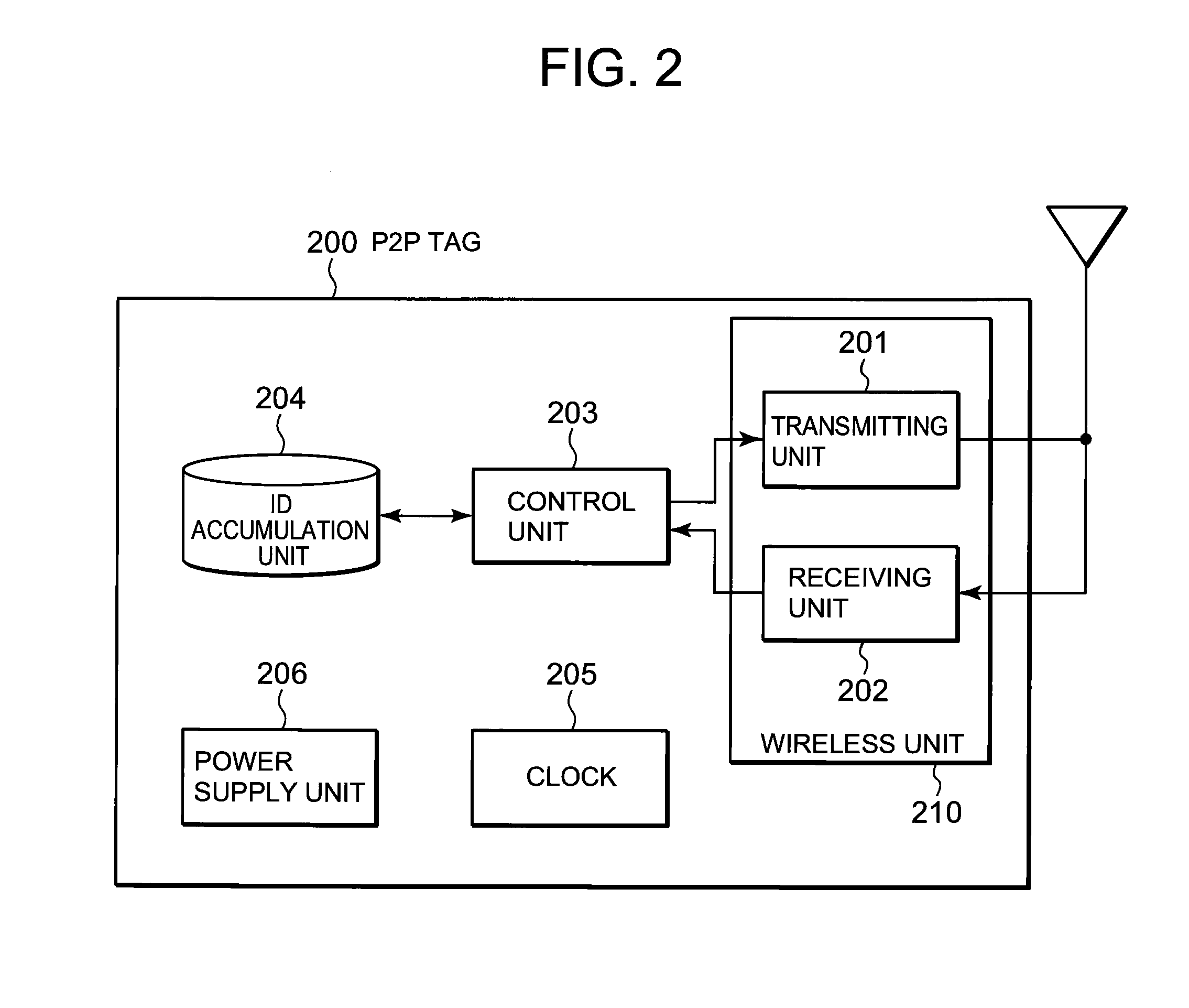Wireless communication system, communication control method and communication node
a communication control and wireless communication technology, applied in power management, high-level techniques, instruments, etc., can solve problems such as difficult to reduce power consumption, data collisions, and limited slots to be used at gts within the super-frame, so as to extend the wireless communication system to a wider area, reduce power consumption, and reduce power consumption
- Summary
- Abstract
- Description
- Claims
- Application Information
AI Technical Summary
Benefits of technology
Problems solved by technology
Method used
Image
Examples
first embodiment
The First Embodiment
[0125]First, referring to FIG. 1, description will be given on a communication system, which comprises wireless nodes of different types in the first embodiment of the invention. FIG. 1 is a schematical drawing to show an example of a communication system, which comprises wireless nodes of different types in the first embodiment of the invention.
[0126]The communication system shown in FIG. 1 comprises a gateway (GW) 100 and a plurality of wireless nodes (wireless tags) 110 to 114. GW 100 is connected to an external network (e.g. Internet) 105 via wired / wireless means, and it is a communication node, which can communicate with the external network 105. It is desirable that GW 100 is fixed at a position where the power required for operation can be supplied via a given wiring.
[0127]On the other hand, each of the wireless tags 110 to 114 is a small-type wireless tag (an active electronic tag) driven by battery, and it is a communication node, which can transmit and ...
second embodiment
The Second Embodiment
[0190]Next, description will be given on the second embodiment of the invention. FIG. 9 is a schematical drawing to illustrate a wireless communication network including a plurality of nodes 1 to 4 in the second embodiment of the invention. In FIG. 9, each of the plurality of nodes is a wireless communication node, which can directly communicate with other nodes present in the neighborhood (within wireless propagation range) of each of the nodes 1 to 4. Each of the nodes 1 to 4 can change the node, with which it can communicate when it moves. The nodes 1 to 4 may be mobile or may be fixedly set.
[0191]The nodes 1 to 4 are the nodes to perform wireless communication as described above. Each of these nodes is a node, which automatically starts and stops a receiver (hereinafter, may be referred as “Rx”) of the wireless unit. In the schedule of the starting and the stopping, by performing the synchronization between the nodes, each node can have the same schedule.
[01...
PUM
 Login to View More
Login to View More Abstract
Description
Claims
Application Information
 Login to View More
Login to View More - R&D
- Intellectual Property
- Life Sciences
- Materials
- Tech Scout
- Unparalleled Data Quality
- Higher Quality Content
- 60% Fewer Hallucinations
Browse by: Latest US Patents, China's latest patents, Technical Efficacy Thesaurus, Application Domain, Technology Topic, Popular Technical Reports.
© 2025 PatSnap. All rights reserved.Legal|Privacy policy|Modern Slavery Act Transparency Statement|Sitemap|About US| Contact US: help@patsnap.com



